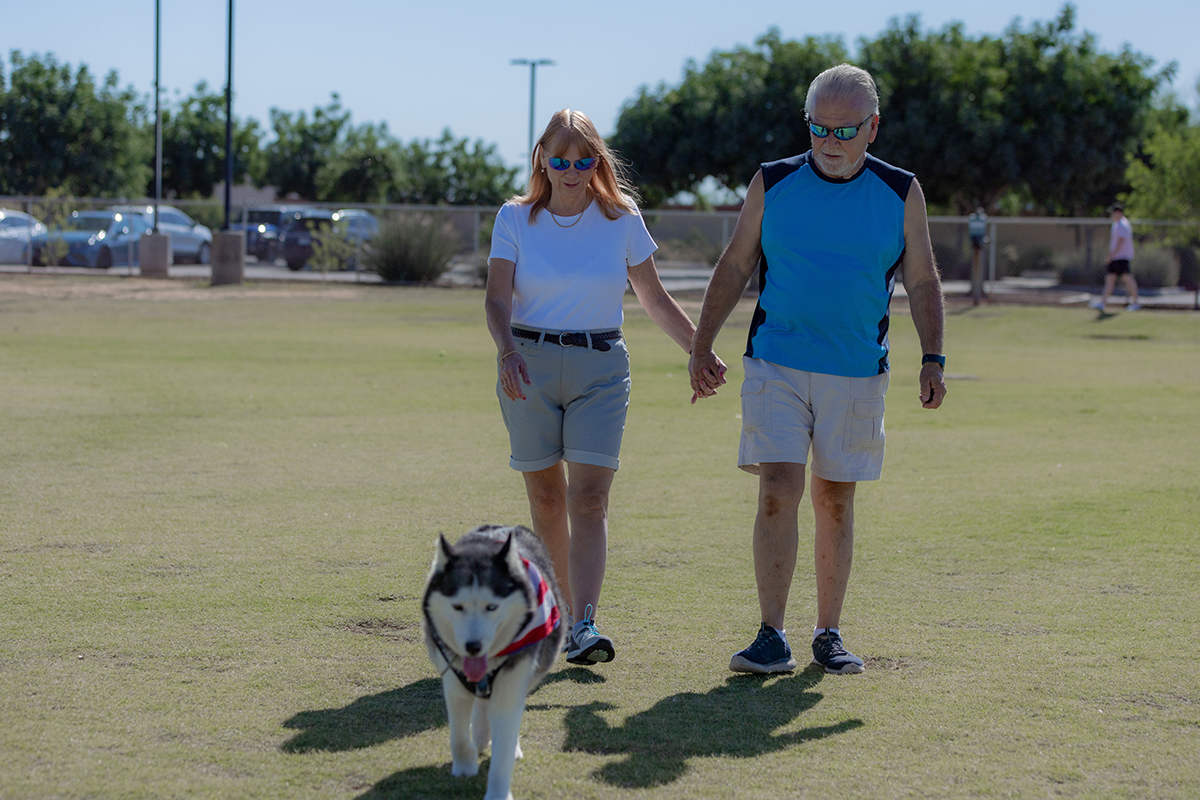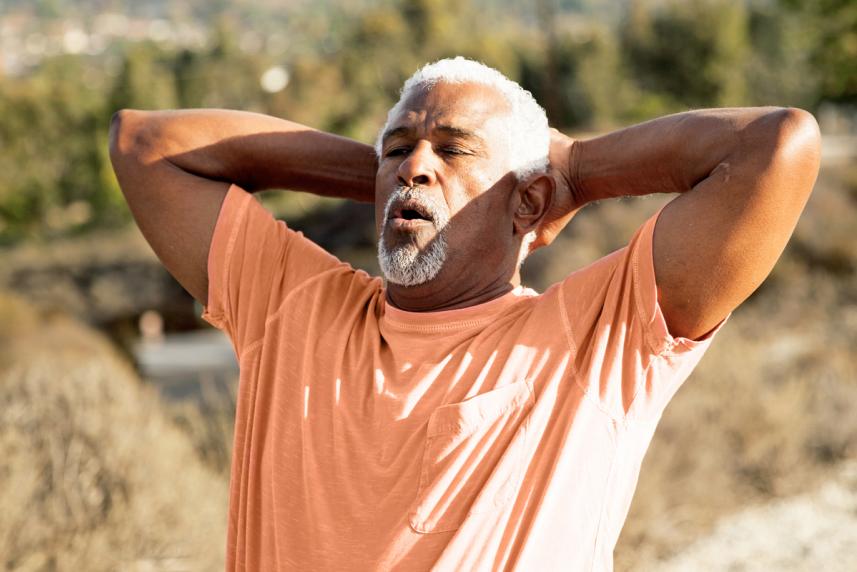
At Optum, you get personalized care to help you meet your health goals. That's why more than 4 million people trust our doctors and Medicare Advantage.
You know that your lungs help you breathe. But how exactly do they work, and how can you keep them healthy? Our expert-backed guide walks you through the ins and outs.


You know that your lungs help you breathe. But how exactly do they work, and how can you keep them healthy? Our expert-backed guide walks you through the ins and outs.
Every time you take a breath, your lungs work hard to keep you alive. You probably never think about them, especially if breathing comes easily. But if your lungs struggle to do their vital work, your overall health can struggle, too. The goal? To breathe as easy as you can.
The first step is learning how your lungs work. We’ve got the lowdown on that, plus what you can do to keep your lungs healthy.
Your lungs are two pink, spongelike organs in your chest. They’re the centerpiece of your respiratory system. Their main job is to move fresh air into your body (when you breathe in) and remove waste gas (when you breathe out).1
Lungs provide oxygen to every cell in your body. When you breathe in air, oxygen moves into your bloodstream. Your blood takes it to the cells around your body. At each cell, oxygen is exchanged for a waste gas called carbon dioxide. Your bloodstream then carries carbon dioxide back to your lungs. It leaves your body when you breathe out.
This is an automatic process that you don’t have to think about. The cycle happens eight to 16 times every minute.
When you breathe in, air goes through your nose to your windpipe.2 The muscles in your chest expand the lungs. The air travels from your windpipe to your lungs.
When it gets there, the air goes through tubes in the lungs called bronchi. Bronchi have tiny air sacs at their ends. These tiny sacs have small blood vessels, or capillaries. Oxygen moves from the air you breathe into the capillaries. The process goes in reverse when your body removes carbon dioxide.
Other parts of the respiratory system all have roles in the breathing process. Your nose, mouth and throat help filter and move clean air into the windpipe.
The lung and heart work together as a system, says Alan M. Fein, MD. He’s a lung specialist at ProHealth Lake Success Otolaryngology, part of Optum, in Bethpage, New York. “Anything that maintains heart health maintains lung health,” he explains.
Think of it this way. The lungs are the organs that bring oxygen into the body and into the bloodstream. The heart is the organ that circulates that blood. It helps get carbon dioxide back into the lungs so that you can get rid of it. This is all helped by the arteries in the lungs. They move blood from the heart to the lungs.

At Optum, you get personalized care to help you meet your health goals. That's why more than 4 million people trust our doctors and Medicare Advantage.
You can take several simple steps to improve your lung health. “You want to maintain healthy nutrition, healthy air quality and a healthy lifestyle,” says Dr. Fein. These tips can get you started.
Stop smoking. You knew this was coming. Smoking cigarettes is the main cause of lung problems. It can lead to illnesses like chronic obstructive pulmonary disease (COPD) and lung cancer. Quitting can save your life. Cigarette smoking causes up to 90% of all lung cancer cases3 and 40% of all cancers4 in the U.S. That’s according to the Centers for Disease Control and Prevention (CDC). Second-hand smoke is dangerous, too. Breathing in toxic fumes can damage your airways and those small air sacs in your lungs.
Smoking tobacco in a pipe or cigar can also cause lung and throat cancer, heart disease and other lung diseases.5 Vaping isn’t safe either. The vapor you inhale contains chemicals and heavy metals that can seriously damage the lungs.11 And smoking marijuana can also increase your risk of lung problems as well.12
Get regular exercise. Staying active makes your lungs (and your heart) stronger. Exercise can also strengthen the muscles that help your lungs expand, explains Jeffrey Scott, MD. He’s a lung specialist at Reliant Medical Group, part of Optum, in Worcester, Massachusetts.
“Exercise is absolutely important for good health,” Dr. Scott says. You should aim for at least 150 minutes of moderate physical activity every week. A good goal: Try to get 30 minutes on most days. Walking is a great place to start.
Eat healthy. The lungs and the heart are a team. That’s why a heart-healthy diet also helps your lungs . Good nutrition can help you breathe easier and fight off germs. Aim to fill your plate with:
Keep your weight in check. Maintaining a healthy body weight is important for lung health. Why? When your body carries extra weight, your lungs may need to work harder too.14
Practice deep breathing. Doing this can feel good for many reasons. It can help you feel calm and relaxed, for instance. It might also help exercise the muscles involved in breathing. Get more tips on how to relax in minutes.
Keep the air inside your home clean. Here’s how:
Keep up with yearly health checkups. See your doctor regularly to catch any lung problems early. Some lung issues, such as lung cancer, can have no symptoms until they’re serious.
Get vaccinated. Make sure you’re up to date on your yearly flu shot and your COVID-19 vaccines. These shots protect you from diseases that can harm your lungs. If you’re 65 or older or have other health problems, you also should get a pneumonia shot. (You can save money on your shots with coupons from Optum Perks. You can use them at pharmacies nationwide. Download them now.)
Steer clear of germs. Good hygiene can help keep your lungs healthy, too. Here are some smart habits to adopt.

Even if you live a healthy life, you can still run into health problems. Keep an eye out for the following symptoms. They could mean you have asthma (a lung problem that makes it hard to breathe). Or you could have a lung infection or other issue. And if you notice them, talk to your doctor.
Coughing. Sometimes a cough will produce yellow or green-tinged mucus. (This is a thick fluid that coats the inside of the nose, mouth and other parts of the body.) That can be a sign of infection. Coughing up blood is always an emergency, says Dr. Scott. If that happens to you, see a doctor right away. A chronic cough is one that lasts longer than eight weeks. It could mean something is wrong, so it’s best to see your doctor about a cough that won’t stop.
Chronic chest pain. If your chest is aching, your lungs (or heart) might be causing the pain. The problem could be serious, like a blood clot in the lung. It can cause chest pain, coughing and shortness of breath. This is an emergency that needs medical attention right away.
Shortness of breath. Can’t catch your breath when you walk or climb a few stairs? Something could be off with your lungs.
Wheezing. Are you making a whistling sound as you breathe? It could mean something is blocking your airways. Wheezing is also a sign of asthma or COPD.
Chronic mucus. This thick substance is created in your airways. Mucus stops irritants and infections from getting deeper into your lungs. But if your body makes a lot of mucus for longer than a month, it could signal a problem.
COPD is a lung problem that makes it hard to breathe. There are two types: bronchitis and emphysema. It happens when the airways in your lungs become red and swollen.6 This makes it harder for air to flow in and out of the lungs. Your body can’t get enough oxygen. And more carbon dioxide can build up. “Sometimes, long-standing asthma can also result in COPD,” says Dr. Fein.
About 16.4 million people in the U.S. are diagnosed with COPD each year.6 Symptoms of COPD include:
Many things can cause COPD. But 85% to 90% of all COPD in developed countries is caused by cigarette smoking7. Other factors can include:
Your doctor will likely check you for COPD using a simple test called spirometry. You’ll blow air into a tube attached to a machine. You might also need other tests, such as a chest x-ray or CT scan. (Learn why COPD symptoms can flare.)
There is no cure for COPD. But there are ways to care for it. This includes medicines, oxygen therapy, pulmonary therapy and social support. If you need medication, the Optum Perks discount card can help you save up to 80% at pharmacies nationwide.
Asthma is a long-term lung problem in which it’s hard to breathe. About 26 million people in the U.S. have asthma, according to the American Lung Association8. It can be life-threatening if you don’t get the right care.
When you have an asthma attack, the muscles around your airways tighten. This narrows them and prevents air from getting through. The lining of the airways also swells. That makes it harder to breathe as well. Your body also produces more mucus. That mucus clogs the airways.8
Asthma has multiple causes. Common ones include allergies to mold and pollen and viral infections. Exercise, stress and weather can also trigger an asthma attack.
Symptoms of an asthma attack include:
Treatment includes medications called bronchodilators. These work by relaxing the muscles around the airways. Certain medications, like inhaled corticosteroids, can also help reduce swelling and mucus. (Asthma medications are eligible expenses under health savings accounts (HSAs) and flexible spending accounts (FSAs). You can use those funds to help you save. Learn more.)
Another type of treatment is called immunotherapy, says. Dr. Fein. This medication can help prevent the basic causes of asthma by working on certain cells in the body.
Lung cancer is the leading cause of cancer deaths worldwide, according to the World Health Organization (WHO)9. Cigarette smoking is a major cause, Dr. Fein says. But it can also happen in people who have never smoked.9
These are the major signs and symptoms of lung cancer:
Keep in mind that there aren’t always symptoms with early-stage lung cancer. You might have a cough and think it’s just a cold. Lung cancer is most easily treated when it’s caught early. This is why screening is so important. Get screened for lung cancer if all of these are true for you10:
Doctors screen for lung cancer with a special machine called a CT scan. There are a number of ways to care for lung cancer. They include:
© 2024 Optum, Inc. All rights reserved. Do not reproduce, transmit or modify any information or content on this website in any form or by any means without the express written permission of Optum.
The information featured in this site is general in nature. The site provides health information designed to complement your personal health management. It does not provide medical advice or health services and is not meant to replace professional advice or imply coverage of specific clinical services or products. The inclusion of links to other web sites does not imply any endorsement of the material on such websites.
Stock photo. Posed by models.